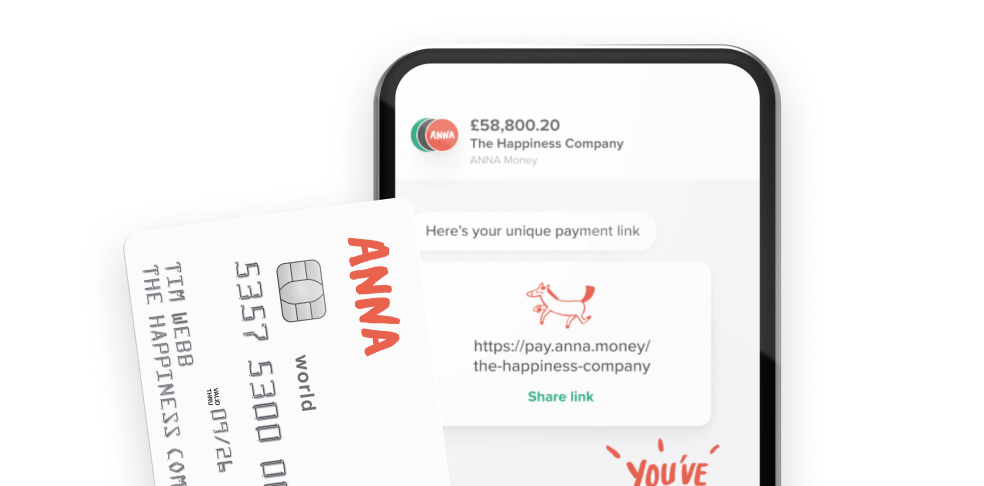Don’t miss out on tax relief on your self-employed pension contributions

Experts are warning that the self-employed are heading for a retirement crisis. A survey of 5,000 self-employed workers by the wealth manager Interactive Investor found that 76% weren’t saving into a pension. Of these, 38% had never saved into a pension, while another 38% had a workplace pension from a previous job but weren’t saving anything now.


- In this article
- What is pension tax relief?
- How does tax relief on pensions work?
- Understanding tax relief eligibility
- Contribution types
- How can I calculate the tax relief on my pension contributions?
- Methods of Claiming Tax Relief
- Level of Tax Relief
- Annual Allowance and Tapered Annual Allowance
- Managing Excess Contributions
- Tax Treatment for the Self-Employed
- FAQ
And with 4.25 million self-employed people in the UK (according to the latest figures from the Office for National Statistics) this means that millions are likely to fall short of cash when they retire.
But if that’s you, it’s not too late to turn things around! Navigating the landscape of self-employed pensions can seem tricky, but understanding how to maximise your tax relief is the key to making it feel achievable. So in this guide we’re going to help you understand the basics of pension tax relief, demystify setting up a self-employed pension and show you the potential savings you can make through sensible pension planning. Ready to start dreaming of that retirement sipping gin and tonic by the sea? Let’s get cracking…
What is pension tax relief?
Pension tax relief is a government initiative to encourage people to save for retirement by providing tax rebates on pension contributions. For the self-employed, this means that money invested into a pension can be partially reclaimed from taxes, so it’s a handy tool for both tax management and retirement planning.
How does tax relief on pensions work?
When you contribute to a pension, the government effectively tops up your contributions with tax relief. If you’re a basic-rate taxpayer, for every £80 you put into your pension, the government adds another £20, making a total contribution of £100. For higher and additional-rate taxpayers, further relief can be claimed through your self-assessment tax return.
Understanding tax relief eligibility
Conditions for relief
To qualify for pension tax relief, you must have relevant UK earnings (we’ll explain that in a moment) that’s at least equal to the amount you contribute in a tax year.
Other eligibility criteria include being under the age of 75 and not exceeding the annual allowance for contributions.
UK relevant earnings
Relevant earnings are specific types of income that qualify for pension contributions relief so it is crucial calculating what this is. They are calculated differently depending on whether you are self-employed or a company director.
For sole traders the profits before tax from your sole trader business count as your UK relevant earnings. This is the income that you would be reporting on your self-assessment tax return.
For company directors the salary that you are paid from your own company counts as your relevant earnings for pension purposes. It is important to note that this does not include any dividends or investment income that you would have received.
Contribution types
There are primarily two types of ways you can make a contribution into your pension pot:
Gross Contributions and Net Contributions
Gross contributions is the total amount that ends up in the pension pot after tax relief has been added to the contribution. This is when the pension amount that is to be paid is taken off the income on which tax is to be calculated on. To benefit from this contribution the person would be on the payroll receiving a salary and, for a self-employed person, this is an unlikely scenario.
When you, as a self-employed individual, choose to contribute to your pension, you make a net contribution (the actual amount you pay) and the government adds tax relief to it to make up the gross contribution.
For example, a gross contribution of £100 costs a basic-rate taxpayer only £80 out of pocket.
Relief for non-earners
Even if you have no earnings, you can still contribute up to £2,880 each tax year which, with tax relief, adds up to £3,600 in your pension pot.
How can I calculate the tax relief on my pension contributions?
Calculating the exact amount of tax relief you can claim can be straightforward if you know your annual earnings and tax rate. For a basic-rate taxpayer contributing £100, the cost is only £80, but calculating for higher or additional-rate taxpayers requires knowing your exact ‘tax rate’ and adjusting your self-assessment accordingly. This is different to your tax code – your tax rate is determined by your annual earnings…

Methods of Claiming Tax Relief
Relief at source
Most personal and stakeholder pensions claim tax relief at source, meaning contributions are made from your net income after tax has been deducted, and the pension provider claims the tax back at the basic rate. As a self employed person paying into a pension scheme, this is the tax relief you’d be receiving.
Net pay
Some schemes, especially those run by employers, use the net pay method where contributions are deducted from gross pay before tax is calculated, giving immediate tax relief at the highest rate.
Level of Tax Relief
Basic rate tax relief
All qualifying contributions benefit from at least basic rate tax relief (20%).
Higher and additional rate relief
If you’re a higher or additional-rate taxpayer, you can claim additional relief on your self-assessment tax return, effectively reducing the cost of your contribution.
Annual Allowance and Tapered Annual Allowance
The annual allowance is currently £60,000, or 100% of your earnings, whichever is lower. High earners may have a reduced tapered annual allowance, which needs careful planning to avoid unexpected tax charges.
If you’re a higher earner and your adjusted income (includes your total taxable income – like salary, dividends, and rental income – plus any pension contributions made by you or on your behalf) is above £260,000, the standard £60,000 annual pension allowance begins to taper down. This taper continues until it hits a minimum of £10,000.
For every £2 that your adjusted income is above £260,000 in the 2026/27 tax year, your annual allowance is decreased by £1. The minimum reduced annual allowance is £10,000.
However, if your threshold income is £200,000 or less, your annual allowance remains unchanged. The threshold income is essentially your total taxable income for the year which includes earnings from all sources such as wages, dividends, rental income, and savings income. This figure is then adjusted by subtracting any personal pension contributions that qualify for tax relief.
The annual allowance is £60,000 or 100% of your earnings, whichever is lower. Make the most of this opportunity for effective retirement planning.
Managing Excess Contributions
Excess Contributions and Error Payments
If you accidentally over-contribute, you may face tax charges. However, it’s possible to carry forward unused allowances from the previous three tax years to mitigate this risk.
Tax Treatment for the Self-Employed
Deductibility of Self-Employed Pension Contributions
Contributions are considered personal expenses and can be claimed against your tax bill, effectively reducing your taxable income.
Treatment as Allowable Expenses
While pension contributions themselves are not allowable business expenses, the tax relief obtained makes them a smart choice for reducing overall tax liability.
FAQ
What do I do next and what are my options for pension schemes as a self-employed individual?
Once you’ve decided that you want to start saving into a pension you simply set one up with a pension provider. There are no pension schemes exclusively for the self-employed, but personal pension schemes are a popular choice.
Personal pensions come in three main types – ordinary pensions, stakeholder pensions (with capped charges), and self-invested personal pensions (SIPPs) that offer a broader range of investment choices.
Another option is the Nest (National Employment Savings Trust) pension, a government-backed scheme that also accepts self-employed people.
Each type of pension has its benefits and drawbacks and it’s important to consult with a regulated financial advisor who can tailor recommendations to your specific circumstances when it comes to investments.
Are self-employed pension contributions tax-deductible expenses?
They reduce your taxable income but are not deductible as business expenses.
Does contributing to a pension reduce taxable income for the self-employed?
Contributing to a pension does not directly reduce business profits, but it does reduce personal taxable income through tax relief.
What is the annual allowance for pension contributions, and how does it affect high earners?
The annual allowance is £60,000, but high earners may be subject to a tapered allowance, which requires careful tax planning. If you’re a higher earner and your adjusted income (includes your total taxable income – like salary, dividends, and rental income – plus any pension contributions made by you or on your behalf) is above £260,000, the standard £60,000 annual pension allowance begins to taper down. This taper continues until it hits a minimum of £10,000.
Can individuals without current income still claim tax relief on pension contributions?
Yes, non-earners can contribute up to £2,880 a year and still receive tax relief up to £3,600.
How much can I pay into a pension and get tax relief?
You can contribute up to £60,000 or 100% of your relevant earnings, whichever is lower, each year. This is known as the annual allowance. If your income is variable, you can also carry forward unused annual allowances from the last three years to maximise the benefits.
Navigating pension contributions and tax relief as a self-employed individual can significantly influence your financial stability in retirement. By understanding and utilising these principles, you can secure a more comfortable and financially stable retirement. Always consider consulting with a financial advisor to tailor these strategies to your personal circumstances.
If you have any additional questions about the tax relief on self-employment pension, you can always ask your free tax advisor – tax terrapin.
Remember, starting early and staying informed are your best strategies for a prosperous retirement, as well as keeping your books tidy, with what ANNA business account can help you easily! All because of the automated bookkeeping based on your transactions. ANNA is a smart business account that will categorise your expenses, remind you to take a picture of the receipts, chase your invoices and help you to collect payments on the go.
Read the latest updates
You may also like
Open a business account in minutes



![How to Start a Currency Exchange Business in the UK [Guide]](https://storage.googleapis.com/anna-website-cms-prod/medium_Cover_3000_Landscaping_Business_Names_Creative_Name_Ideas_daad2f9e2a/medium_Cover_3000_Landscaping_Business_Names_Creative_Name_Ideas_daad2f9e2a.webp)




![140 Creative Tutoring Business Names [Ideas & Examples]](https://storage.googleapis.com/anna-website-cms-prod/medium_Cover_3000_Landscaping_Business_Names_Creative_Name_Ideas_d7964059b3/medium_Cover_3000_Landscaping_Business_Names_Creative_Name_Ideas_d7964059b3.webp)

![How to Start a Self-Employed Business in the UK [Guide]](https://storage.googleapis.com/anna-website-cms-prod/medium_Cover_3000_Landscaping_Business_Names_Creative_Name_Ideas_fe5b6edef1/medium_Cover_3000_Landscaping_Business_Names_Creative_Name_Ideas_fe5b6edef1.webp)
![How to Start an Electrician Business in the UK [Guide]](https://storage.googleapis.com/anna-website-cms-prod/medium_Cover_3000_How_to_Start_a_Car_Detailing_Business_Successfully_74488a6268/medium_Cover_3000_How_to_Start_a_Car_Detailing_Business_Successfully_74488a6268.webp)













